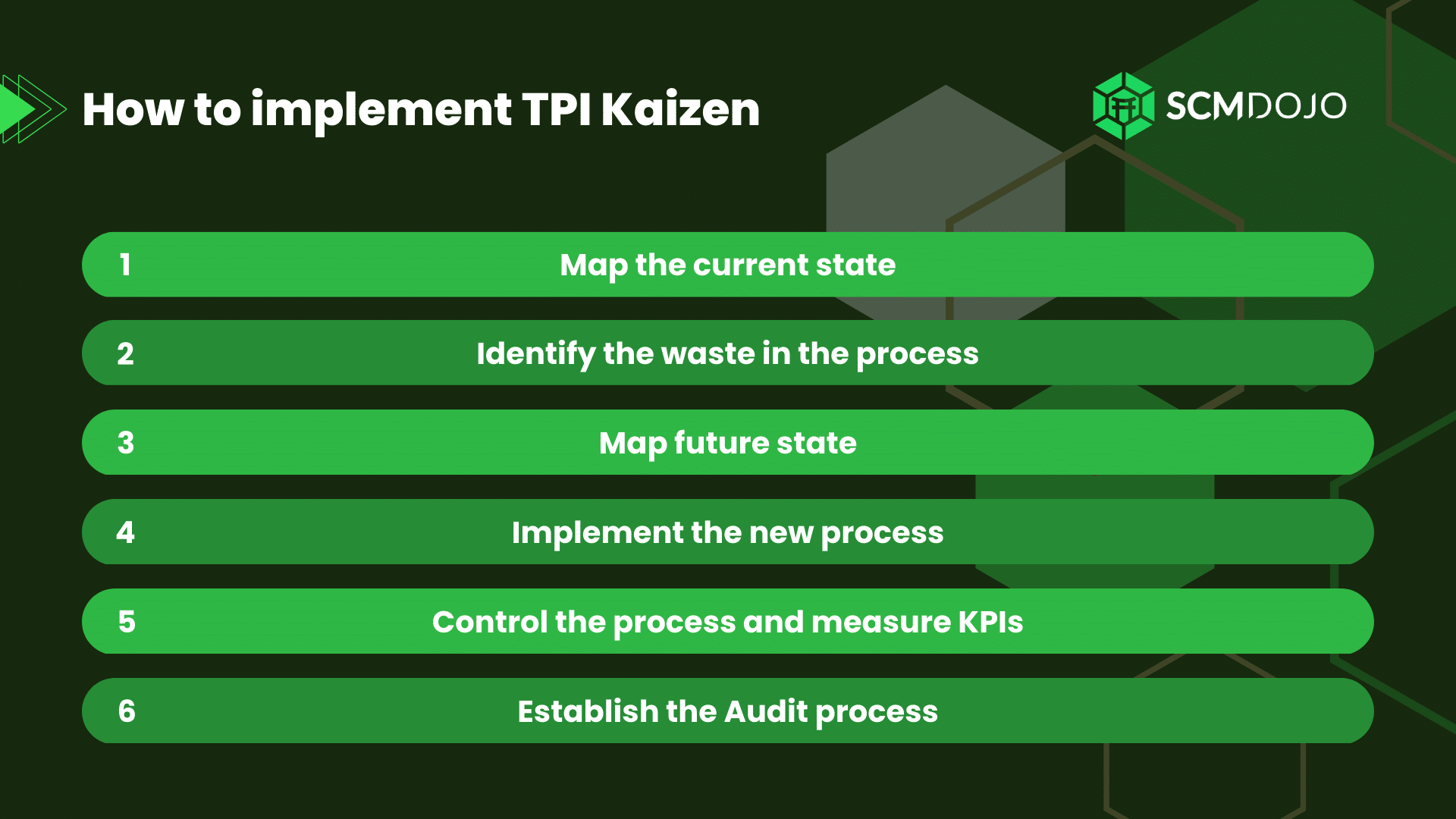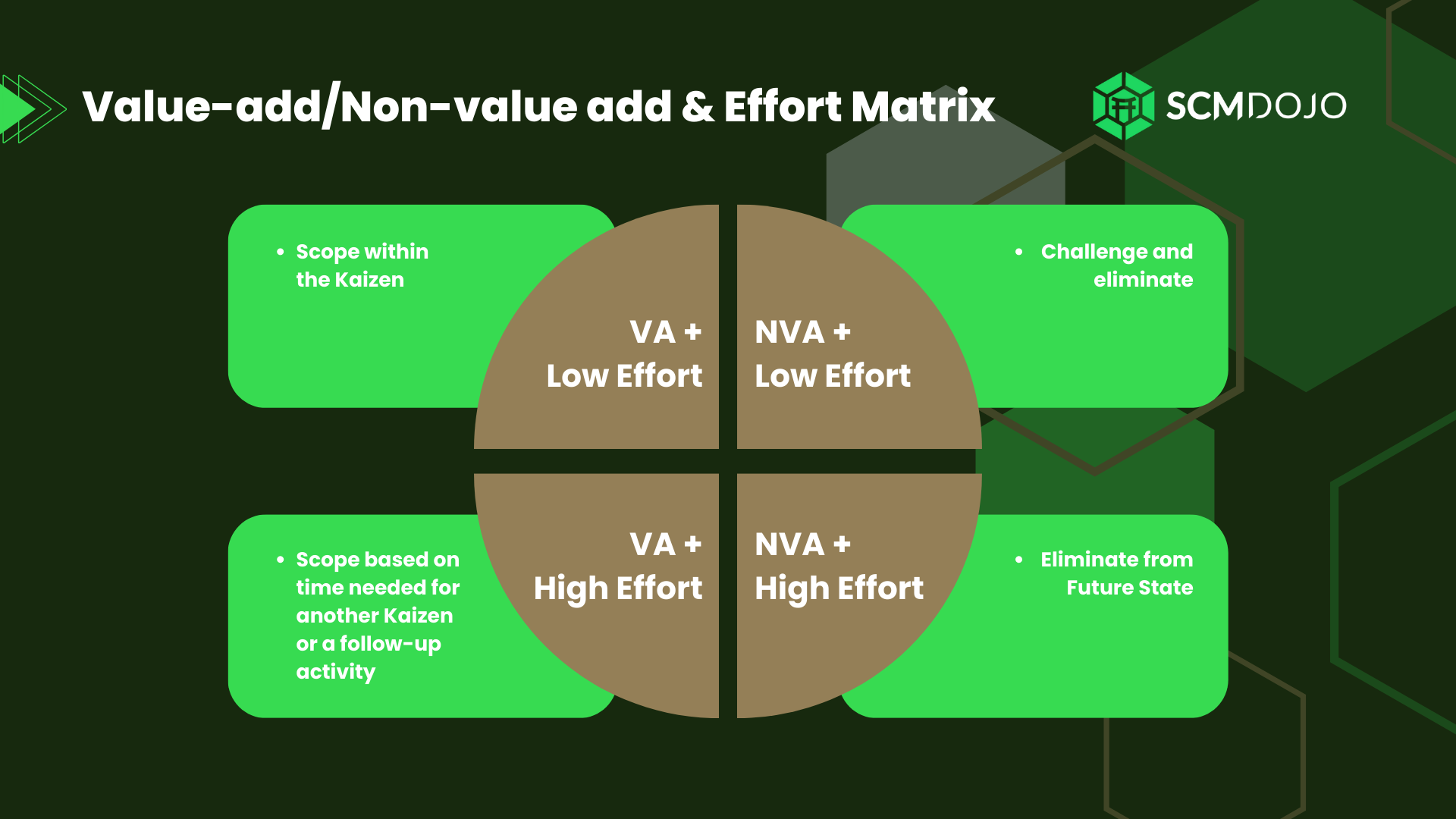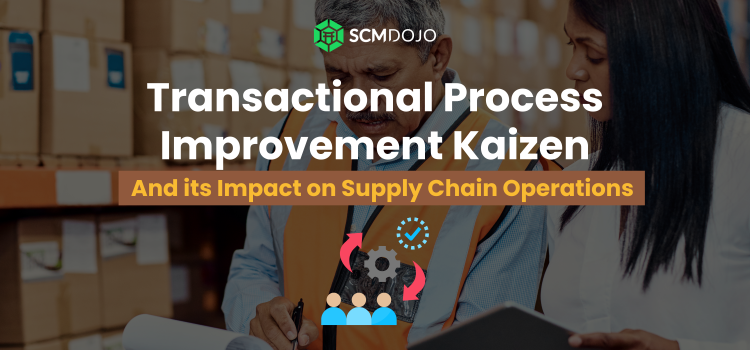If you are an avid SCMDOJO Blog reader, the word ‘Kaizen’ would be a familiar term for you. But in case you haven’t come across it yet, let us briefly touch on what it is and its concept regarding supply chain management and what Transactional Process Improvement Kaizen really is.
Kaizen is a Japanese term that means “continuous improvement” It’s a mechanism used to eliminate waste in lean manufacturing principles. It comprises the Japanese words Kai which refers to “change”, and Zen which means “for the better”. The Kaizen philosophy has become popular in many industries, including supply chain management. In this guide, we will explore how implementing Transactional Process Improvement Kaizen can help you take your supply chain operations to the next level and increase efficiency while reducing costs.
[Read More: 5 Massive Reasons Why You Should Conduct 5S Kaizen in Your Business]
What is Transactional Process Improvement (TPI) Kaizen?
Transactional Process Improvement Kaizen is a methodology aimed at improving the efficiency of business operations, notably supply chain operations. It focuses on identifying and eliminating waste or inefficiencies in any transaction process. This process can include anything from order processing to invoicing and payment collection. The goal is to streamline the process, reduce lead times, and increase accuracy while reducing costs. By implementing this method, businesses can improve their bottom line and maintain a competitive edge.
The beauty of a TPI Kaizen Supply Chain is that it is not limited to just your shop floor or manufacturing process. The principles and tools of this Kaizen Supply Chain can be used and implemented by any team globally to achieve the desired results while delivering value to your customers. It could span from purchasing-related processes like RFQ management and Purchase Order Management to Sales and Marketing or Engineering Change management processes as well as the Hiring process and many more.
Access our FREE 5S Audit Tool Here
Benefits of implementing Transactional Process Improvement (TPI) Kaizen
Implementing Transactional Process Improvement Kaizen in your supply chain operations can yield various benefits that positively impact your business. This methodology allows you to streamline operations, reduce lead times, increase accuracy and efficiency, and eliminate waste or inefficiencies in any transactional process – and ultimately, lead to cost savings and improved bottom-line performance. Additionally, by taking a systematic approach to process improvement, businesses can maintain a competitive edge in their industry while increasing customer satisfaction. Implementing Transactional Process Improvement Kaizen significantly benefits businesses looking to take their supply chain operations to the next level.
How to Implement Transactional Process Improvement (TPI) Kaizen
Like any Kaizen Supply Chain, TPI requires some pre-work before diving into a focused event with the cross-functional team. The specified stages are highlighted below:

1. Map the Current State
To implement TPI Kaizen, it is crucial to map the current state of the process in detail. This step involves going beyond the surface-level understanding and obtaining a granular view of the process from all parties involved. You can achieve this by going on a Gemba Walk and involving every stakeholder to share their perspective and role. This step helps identify any inefficiencies, redundancies, and bottlenecks in the processes that need improvement.
To quantify the measurable improvements, it is essential to count the number of steps/decision points and calculate the overall cycle time of each step. Using colorful post-it notes to chart the process map, with each color representing a task type role, the team can make the map visual and easier to understand. It is recommended to include mapping the current state as a part of the pre-work activity to save time during the TPI Kaizen event and focus on the next steps.
2. Identify the Waste
As a part of TPI Kaizen, it is essential to identify waste in the process. By bringing everyone involved in the process into the same room and mapping out the current state, you gain insight into every task being performed. In addition, this step helps identify which actions add value for customers and are considered “waste.”
Including additional information like cycle time, descriptions, tools, reports, and KPIs in the mapping process is recommended to achieve a more comprehensive understanding of the process. In addition, categorising waste into types like Transportation, Overproduction, Overprocessing, Inventory, Motion, and Waiting Time can be helpful for lean practitioners.
It is important to use symbols, such as exclaiming speech bubbles, to identify bursts or waste in the process to make it visual and easy to understand. Identifying waste is a crucial step towards making impactful improvements in the process.
3. Map the Future State
In TPI Kaizen Supply Chain, it is crucial to map out the future state of the process. After identifying the waste in the current state, it is vital to prioritize which ones should be addressed immediately, which can be worked on over time, and which ones need additional kaizens for improvement. Continuous improvement is a key focus in TPI Kaizen, and follow-up kaizens can be scheduled to optimize the process further.
One helpful tool for mapping the future state is a simple matrix of Value-add (VA)/Non-value add (NVA) and effort. By identifying the tasks that fall under high effort and NVA, they can be removed from the future state immediately. The high effort and VA tasks can be considered for future kaizens or follow-up activities. The items in the low-effort, value-add category can be taken up in the current Kaizen, and the low-effort, non-value add items can be removed from the process. It is important to remember that customers do not pay for non-value add activities.
It is essential to log the new number of decision points and steps in the future state and compare them to the current state to identify the time saved through the new state.

4. Implement the Improved Process
After identifying waste and mapping the future state, it’s time to implement the new process. This step is the most time-consuming part of the Kaizen event, but it’s critical for achieving the desired results. Several tools can be used to implement the new process, such as documenting the process, automating tasks, creating standard procedures, training teams, and managing change.
Documentation of the future state is the first step towards implementation. Once the future state map is created, teams can identify the technology tools/automation tools required to improve process lead times and support the process. During the Kaizen event, the creation and implementation of these tools are critical to success. However, it’s essential to manage change and ensure the buy-in of people who need to use the tool. Implementing tech/automated tools alone cannot help achieve desired results without proper training and change management.
After implementing the right tools, the next step is creating Standard Operating Procedures (SOPs). Standardization of the format used across all teams is essential. SOPs should be visual and easy to understand. Developing a role and responsibility matrix is also important to determine who does what actions and what deliverables are involved in the process.
Finally, it’s necessary to ensure the new process is adopted by the teams involved. This involves providing the right tools and training to ensure proper implementation. Proper implementation and adoption of the new process can lead to significant improvement in process efficiency and ultimately increase customer satisfaction.
5. Manage the Process and Measure Results with TPI Kaizen
The next step of TPI Kaizen Supply Chain is to manage the process and measure the results for sustainable improvements. There are several methods to control processes, but one effective technique that I have used in Kaizens is Poka Yoke or mistake proofing. This tool can be applied to any process step and helps to ensure consistent outcomes by eliminating errors. Mistake-proofing can be implemented in different ways, such as through automation of tools or equipment, rather than relying on soft fixes like training or work instructions, which only reduce the likelihood of errors. It is important to have tools/ways that would eliminate the possibility of error altogether. The goal should be to prevent the error from happening.
In addition to mistake-proofing, it is essential to set up relevant key performance indicators (KPIs) to measure the results and monitor the process. A scorecard can be a helpful tool to bring together all necessary metrics in one place and make them easily accessible and visual for team members to refer to. Every team has the capability to measure metrics and develop a scorecard for their respective team, which can help to measure success criteria in one place.
By managing the process and measuring the results, teams can ensure that the improvements made during the TPI Kaizen are sustained and continue to deliver value over time. It’s essential to continuously monitor and refine the process as needed to ensure ongoing success.
6. Establish an Audit Process
The final step is to set up an Audit process to measure the effectiveness of the Kaizen over an agreed period of time. To ensure consistency, it is recommended to standardize the audit forms and assign a dedicated owner to monitor and collate the results. While the audits can be conducted by different team members, having a single-threaded owner to oversee the process can help maintain accountability. This step is crucial to ensure that the process improvements implemented during the Kaizen are utilized and producing the desired results. If the results fall short of expectations, it is vital to conduct a root cause analysis using the 5 Whys methodology and make necessary corrections.
Conclusion
In conclusion, TPI Kaizen can bring about significant improvements to various teams and aspects of a business. However, successful implementation requires strong leadership support and effective change management to address the concerns and motivations of the teams involved. By doing so, we can maximize the return on investment for the event and achieve lasting benefits for the organization.
For more insights into Warehouse Management, check out our YouTube channel for more related content right here!
Co-Author: Sneha Kumari, MBA, Six Sigma
Sneha is a Six Sigma Green Belt certified professional with over 12+ years of experience leading Quality, Supply chain, and Operational activities at some leading organizations across the globe. She completed her MBA from the University of Pittsburgh and completed her Bachelor’s in Electronics Engineering from India. Her breadth of experience in supply chain spans from strategic procurement to demand planning, inventory management, warehouse operations, Logistics/ reverse logistics, 3PL management, and process improvements across all these functions. Sneha is a lean practitioner and has led multiple change management initiatives across the companies she has worked with. She was recognized as one of the few Operations Women Leaders by McKinsey and Co. for her experience in the field of operations and was also recognized as Top 50 women to follow in the ERP space by Sourceday







